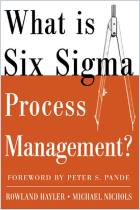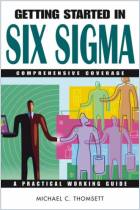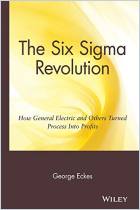Many business books focus on theories and abstractions that real world businesses cannot implement. Bill Carreira and Bill Trudell provide a practical, action-oriented approach to eliminating waste and boosting quality. They use real-world examples from their consulting experience to show you how to create, measure and manage value. While some of their information may seem a bit technical, the authors present their method as clearly and as practically as they can. Lean Six Sigma can help you make dramatic improvements. getAbstract suggests this useful manual to engineers, and to manufacturing and operations managers.
Six Sigma from the Customers’ Point of View
As an executive, an entrepreneur or a manager, you have to engage your business in continuous improvement. The Lean Six Sigma program’s focused approach to this challenge strives for perfection. It requires a quality level of no more than 3.4 defects per million cycles. Lean Six Sigma, which regards improvement as a long-range, unending, tenacious pursuit, is designed to boost quality, avoid waste and make your firm’s workflow more efficient. The two basic processes for implementing such a program are “Kaizen,” the Japanese word for “continuous improvement” – a lasting effort to make each task work better – and “DMAIC,” a program for addressing larger, overall quality issues. DMAIC is an acronym for Lean Six Sigma’s basic process: “Define, Measure, Analyze, Improve and Control.”
Customer satisfaction has a specific meaning in Lean Six Sigma, which uses verifiable metrics to capture how well your firm fulfills customers’ wishes, rather than assessing its performance according to internal standards. If your firm gives a customer a quote for delivery in 10 days, and you fulfill that promise, it looks like a success. ...
Bill Carreira has more than 30 years of experience in helping manufacturing firms as president of his own consulting firm in Sarasota, FL. Bill Trudell, president of Val-Stream consulting in Bradenton, FL, uses Lean Six Sigma to help companies eliminate waste and expense.



















Comment on this summary or Start Discussion